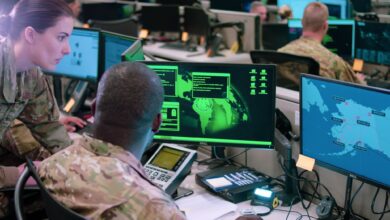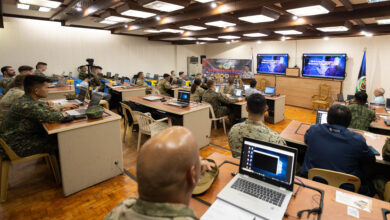US to Explore Establishment of Independent Cyber Force Branch
The US will explore the creation of an independent Cyber Force unit for its military as part of the country’s $883.7 billion defense policy bill for fiscal year 2025.
The amendment was passed unanimously by the House Armed Services Committee, with the National Academy of Sciences selected as the organization leading the research.
Spearheaded by Texas Representative Morgan Luttrel, the proposal aims to bridge gaps in digital security identified by varying studies, analysts, and military personnel.
“Despite the best efforts of the Department and Congress, the issues around building capability, capacity, and talent for cyber operations remain the most intractable facing the Department,” Luttrel wrote in an op-ed for Defense News.
“After so much time, effort, and attention, we must reconsider whether it makes sense to allow four independent military services to perform the functions of one service.”
The nearly $900-billion defense package has been sent to the House floor for a full review before a corresponding assessment by the Senate.

Supporting CYBERCOM
Luttrel clarified that establishing a Cyber Force will not disregard the existing US Cyber Command (CYBERCOM) but instead support and boost the segment’s operability with other joint force members.
“This is not an indictment of the immense effort expended by CYBERCOM leadership over the years,” the congressman stated.
“CYBERCOM has been an incredibly well-led organization that has made the best of the hand it’s dealt. But the limitations of the current structure … are more apparent and the implications are more dangerous than ever before.”
‘Limited Window’
A research paper published by the Foundation for Defense of Democracies (FDD) in March offered a guide for launching a US Cyber Force.
According to the study, the Cyber Force should operate closely with the US Army and employ approximately 10,000 personnel.
FDD also suggested that the concept branch should be initially funded with a $16.5-billion budget, with parts sourced from the US Department of Defense’s existing cyber budget.
“Previous attempts to increase US cyber force readiness have failed,” the FDD wrote in its analysis. “This failure stems from the basic fact that non-cyber services are responsible for cyber force generation. The solution is to create an independent, uniformed Cyber Force.”
“The United States has a limited window of opportunity to reorganize, allocate resources, and develop sustainable cyber force readiness. The US military has failed to fix the problem on its own. Only Congress can create a new independent service, so it is time for lawmakers to act.”












